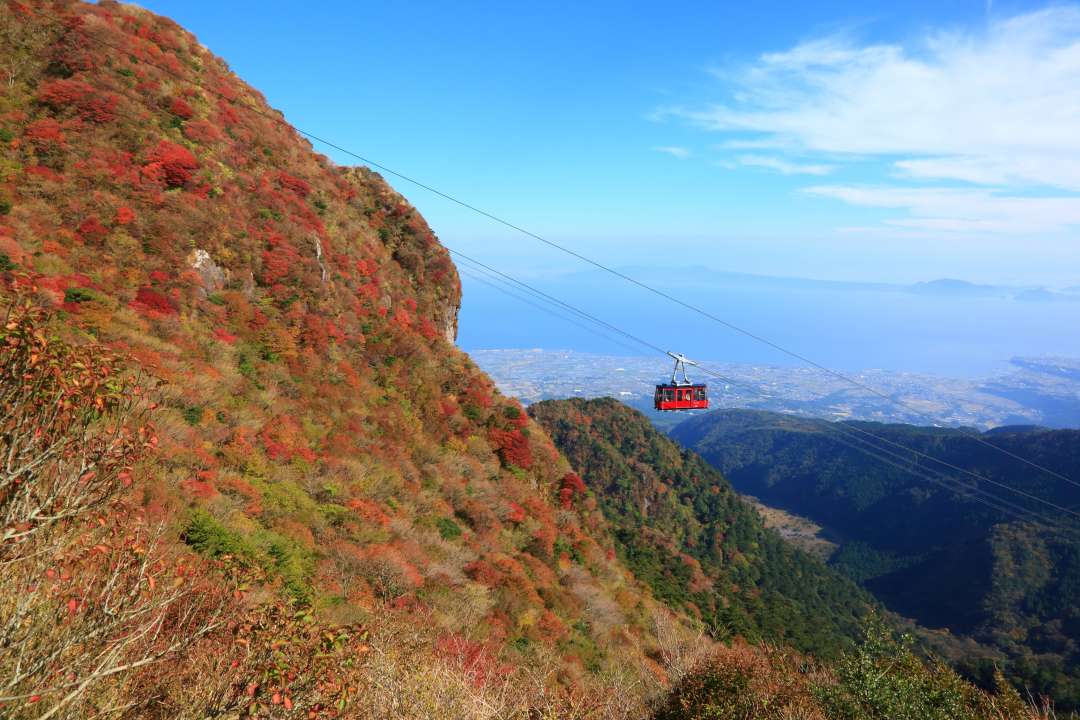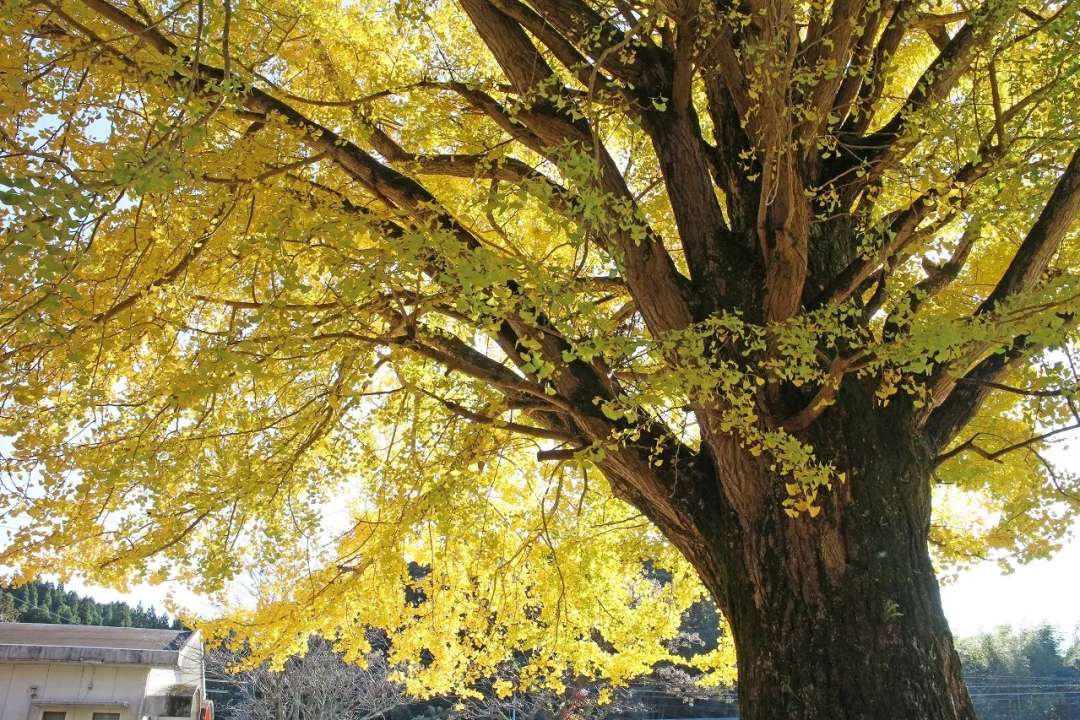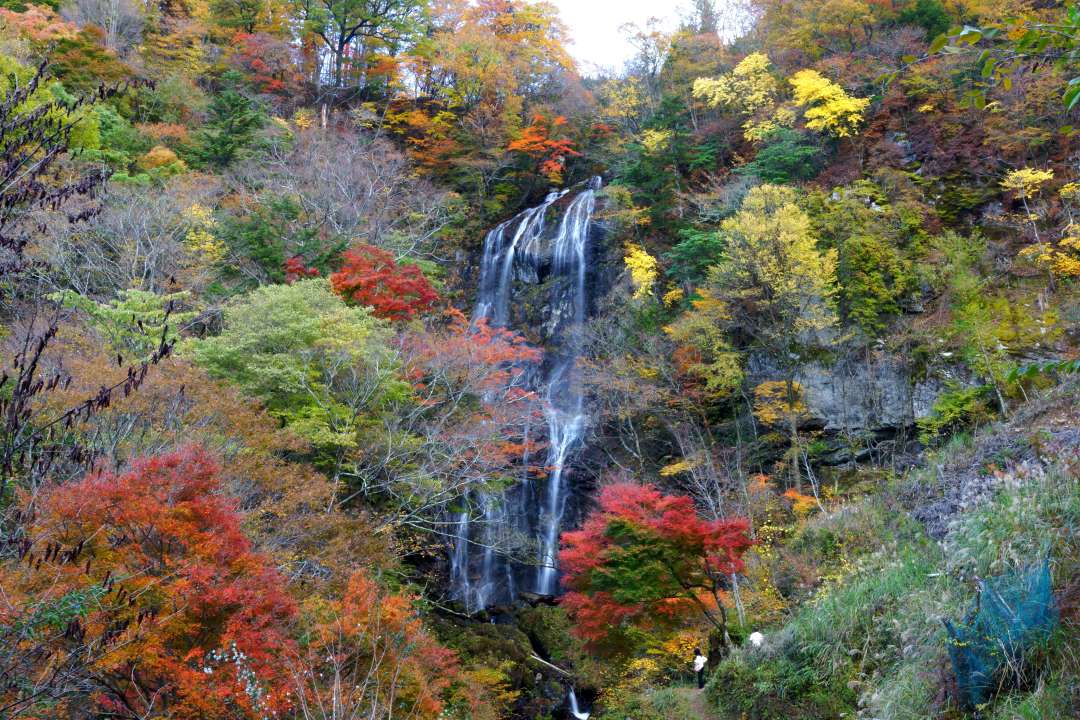
It’s autumn, and that means it’s time to go hunting for the best foliage viewing spots around Japan. With an abundance of spot recommendations in the Kanto and other areas of Japan, it’s high time we headed south to see what we can find!
The word momiji (紅葉) in Japanese means the red colours of changing leaves. Also pronounced as ‘kouyou’, the autumn season in Japan also brings out many people who participate in what is called ‘momijigari’ or autumn foliage viewing. Made of the characters for momiji, but adding the character for ‘hunting’, this phrase encapsulates the act of getting out and about and finding the best spots for a stunning autumn display.
Kyushu, the southernmost main island of Japan, is well known for its fantastic beaches, tropical island scenery, and soothing onsen resorts. However, it is important to note that it is also a magical autumn destination! From Fukuoka all the way down to Kagoshima, there are an abundance of spots that are must-sees if you venture down to Kyushu. The foliage in Kyushu also takes slightly more time to change to its stunning colours as the island is further to the south of the country. In contrast, the northernmost island of Hokkaido is one of the first areas to get all the foliage. The name Kyushu originally dates back to the time where the region was composed of 9 distinct provinces, including the famous Satsuma Province, known for its rebellion in the Meiji Period. Steeped in history and beauty, let's get to some autumn top spots!
Fukuoka
To start our journey down south, we’ll begin in Fukuoka Prefecture. Famous for its Hakata ramen, the prefecture has itself plenty of wonderful spots to view some autumn foliage.
In Hirokawa Town, south of Fukuoka City and nearby Kurume City, is the Taibaru no Ginkgo. The ginkgo tree is found quite commonly across Japan, there are many famous spots in the Kanto area, and many singular, large ginkgo trees known for their foliage. The Taibaru no Ginkgo features expansive rows of ginkgo trees, lining the area and lighting up the day with their brilliant yellows. Especially during November, the leaves all turn in tandem, eventually falling to blanket the ground in a soothing and colourful sheet. As the ginkgo is the town tree, this is one way to see some of the beauty that Hirokawa has to offer!

Saga
As we move to the west, we enter Saga Prefecture, another area filled to the brim with adventure. In terms of momiji hunting, a fantastic spot to check out is the temple Daikozenji. A great spot for blooming rhododendrons and autumn colours, it is commonly called the rhododendron temple!
In the spring, 50,000 flowers bloom, but the autumn brings spectacular foliage as well. In the temple grounds there is also a 5 story pagoda and a 12 faced kannon sculpture that is only opened to the public once every 12 years. Daikozenji dates back to the Nara Period and was founded in 717 by Gyoki, a Buddhist priest.

Don’t forget to receive a goshuin, a stamp given out by temples and shrines that visitors use to commemorate their visit. These seals are often unique to each temple, so make sure to get one whenever you visit a shrine or temple!
The nearest station is Kiyama, on the JR Kagoshima Line, you can access the temple with a short taxi ride.
Continuing on in Saga, there is the Kankyogeijutsu no Mori, or the Forest of Environmental Art.
Located on Mt. Sakure, the area is perfect throughout all the seasons, with more than 10,000 maple trees that are a sight to behold in the autumn. The Fuyu Sanso gives visitors the opportunity to admire the scenery from inside, akin to a traditional temple or shrine view. The view from inside the Fuyu Sanso, can invoke images of the famous Kyoto temple Rurikoin, as the reflection of the autumn foliages is mirror-like, a second image of the outside. With multiple walking paths around the area, it makes for a beautiful escape from the hustle and bustle of the city.

Nagasaki
We’re off next to Nagasaki Prefecture! A Neighbour to Saga Prefecture, Nagasaki is famous for its deep historical roots, islands, and beaches. Yet when autumn arrives, it becomes another prime destination for some foliage viewing!
One such spot is Nita-Touge. A mountain pass located in the Unzen area, east of Nagasaki City, Nita-Touge is spectacular in all seasons, yet some may say that autumn brings out the best views. Take a ropeway from the mountain pass up to Mt. Myoken which will give you even better views of the surrounding areas. The road leading up to the path also gives great natural sights of cedars and cyprus trees. You may even be able to see the nearby mountain Mt. Heisei Shinzan, a recent creation from an eruption of the volcano named Fugendake.

Seasonal highlights include the autumn foliage, winter frost, azaleas in the spring, and lush green in summer. Gondolas and ropeways can give access to hard to reach views, and the Nita Ropeway is no different. You may even be able to see Mt. Aso, in the neighbouring prefecture of Kumamoto, which is our next destination!
Kumamoto
From Nagasaki, we can take a short hop and land in Kumamoto Prefecture. Famous for its imposing castle and cuddly mascot, make sure not to miss the autumn leaves!
Our autumn spot in Kumamoto is the Mazeno Keikoku, or Mazeno Gorge. A hidden valley deep in the forested interior of the prefecture, near the border with Oita Prefecture, this area is only open a few times a year to visitors. With the Chikugo River flowing through it, crashing amongst rocks underneath a ceiling of green or red, this is an attractive spot for anyone looking for an incredibly natural area with beauty abound.

One of the distinguishing factors of the area is that it is only open during specific times of the year, outside of these times access is restricted. This may very well increase the natural beauty, as the gorge stays undisturbed outside of summer and autumn.
Kagoshima
Kagoshima, famous for its volcano, Sakurajima, and many nearby tropical islands, also has an abundance of fantastic autumn spots. So let's not waste any time and get straight into them!
Everyone is a fan of ginkgo trees. The beautifully shaped green leaves, a symbol of the city of Tokyo, walking amongst a grove of trees during either summer or autumn is a delight. However, sometimes you only need one tree to be amazed! Located in the town of Kimotsuki, the Honjo no Ooichou, or Honjo Giant Ginkgo, is one tree that bursts into yellow during the autumn. Standing alone near the Honjo Community Centre and the Doryuji ruins, it is a fantastic place to take a short rest and admire the foliage. The ruins of Takayama castle also lie nearby, making this tree a wonderful spot to include in a day of exploration around the Kimotuski area!

Miyazaki
Miyazaki, on the east coast of Kyushu is our next stop. With fantastic beaches, delicious mango, and otherworldly shrines, this prefecture is a must-see.
In terms of autumn foliage, one spot that cannot be missed is Shirataki Falls. A waterfall in the Gokase area, near the famous Takachiho Gorge, the falls look akin to a cloth that cascades 60 metres. Paired with the reds and oranges of autumn foliage, it makes for a perfect viewing spot. From any angle this waterfall will stun, come back in the winter and you’ll see it in a completely different light, as the falls freezes during the colder months!

Oita
Last but not least is Oita Prefecture. Located in between Miyazaki and Fukuoka, Oita, especially its capital Beppu, is world famous for its onsens. Exploring Beppu’s famous ‘Hells of Beppu’ is a well known travel tip, but we’re here for the leaves, the onsen can come after!
In the town of Kokonoe, west of Oita city is the Kokonoe Dream Large Suspension Bridge. This bridge in Oita Prefecture spans 390 metres, and is the tallest pedestrian suspension bridge in Japan. From the bridge you can see Shindo Falls and the Kyuhenkei Gorge. The valley below and all the foliage around are at their best in November, when many people come out to admire the beautiful leaves and scenery.

And there you have it! Kyushu’s autumn foliage in a nutshell. While many may think that staying in the big cities or up north can give the best views, there are just as good spots to be found in the southernmost main island. So for your next trip to Japan in autumn, why not Kyushu?
To stay up to date with all the latest happenings in Japan follow us on our Facebook and Instagram!

















































